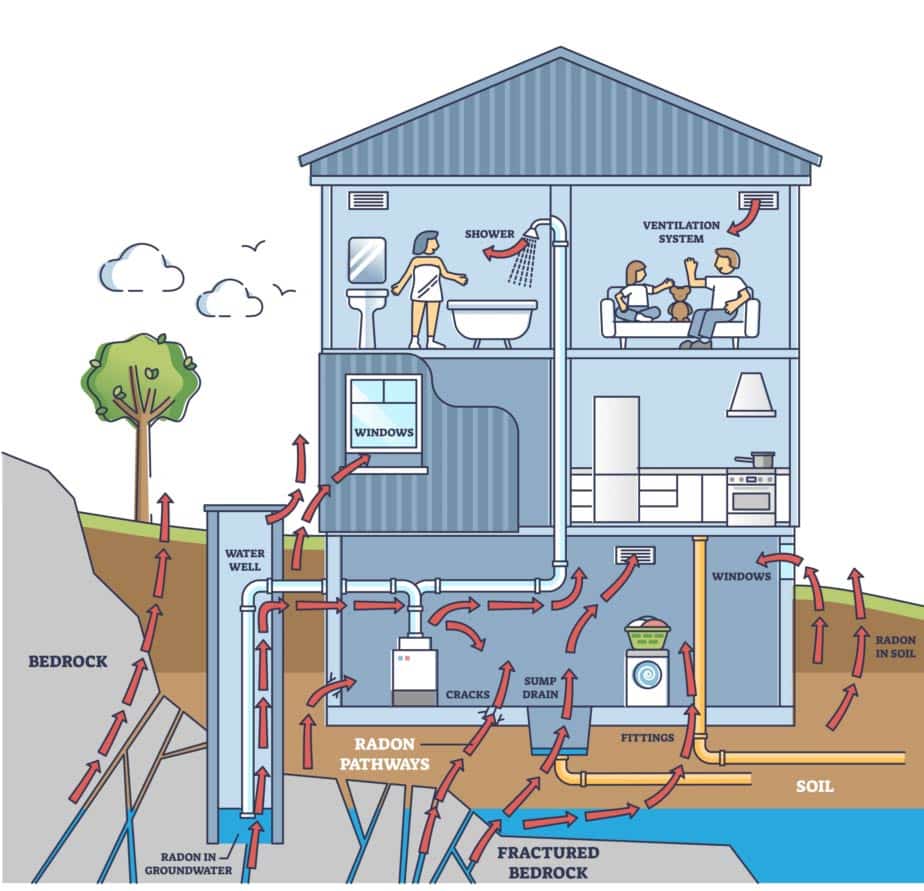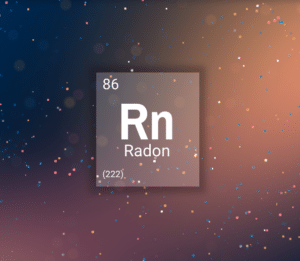How Radon Enters Your Home
Radon might be out of sight and out of mind, but that doesn’t mean it’s out of our homes
Invisible and odorless, this naturally occurring radioactive gas can seep into our living spaces, posing significant health risks over time. Most notably, radon is the second leading cause of lung cancer, after smoking.
Radon gas typically enters a home from the ground up. This is due to the natural decay of uranium that’s found in nearly all soils. Radon gas is released from the soil and can enter a home through various means.
Radon gas can move from the basement to the upper levels of a home through a process called the “stack effect” or “chimney effect.”
The stack effect is a phenomenon that happens because of differences in indoor and outdoor temperatures. When the indoor temperature is warmer than outside, the air inside the house becomes less dense and begins to rise. As the warm air rises and escapes through the upper levels of the home, it creates a vacuum at lower levels. This vacuum pulls in replacement air from outside and from the soil around and underneath the home. If radon is present in the soil, it can be pulled into the house along with the replacement air.

6 Ways Radon Can Enter And Spread Through Your Home
1. Cracks in Foundations and Walls
Radon can seep into your home through cracks in the foundation, walls, or floors. These cracks create pathways for the gas to enter.
2. Construction Joints
Joints between construction materials, such as between walls and floors or around pipes, can provide openings for radon to enter.
3. Gaps around Service Pipes
Spaces or gaps around service pipes (like water pipes, gas lines, or electrical conduit) that penetrate the foundation can also allow radon to enter.
4. Crawl Spaces
Homes with crawl spaces might see radon enter through the soil or gravel in the crawl space. If the crawl space is ventilated, radon may be dispersed, but if it’s enclosed, it could build up.
5. Water Supply
Although less common, radon can also enter a home through the water supply, particularly if you use well water that comes from a source where radon is present.
6. Basements and Lower Levels
Since radon is a heavy gas, it tends to accumulate in low-lying areas like basements, making these areas particularly susceptible.
It’s worth noting that radon can be found in all types of homes, whether they are old or new, well-sealed or drafty, with or without basements. The only sure way to know if your home has radon is to test for it. If high levels are found, a radon mitigation system can be installed to reduce the concentration of radon gas in the home.
Contact PROFESSIONAL RADON SYSTEMS to gain peace of mind.








